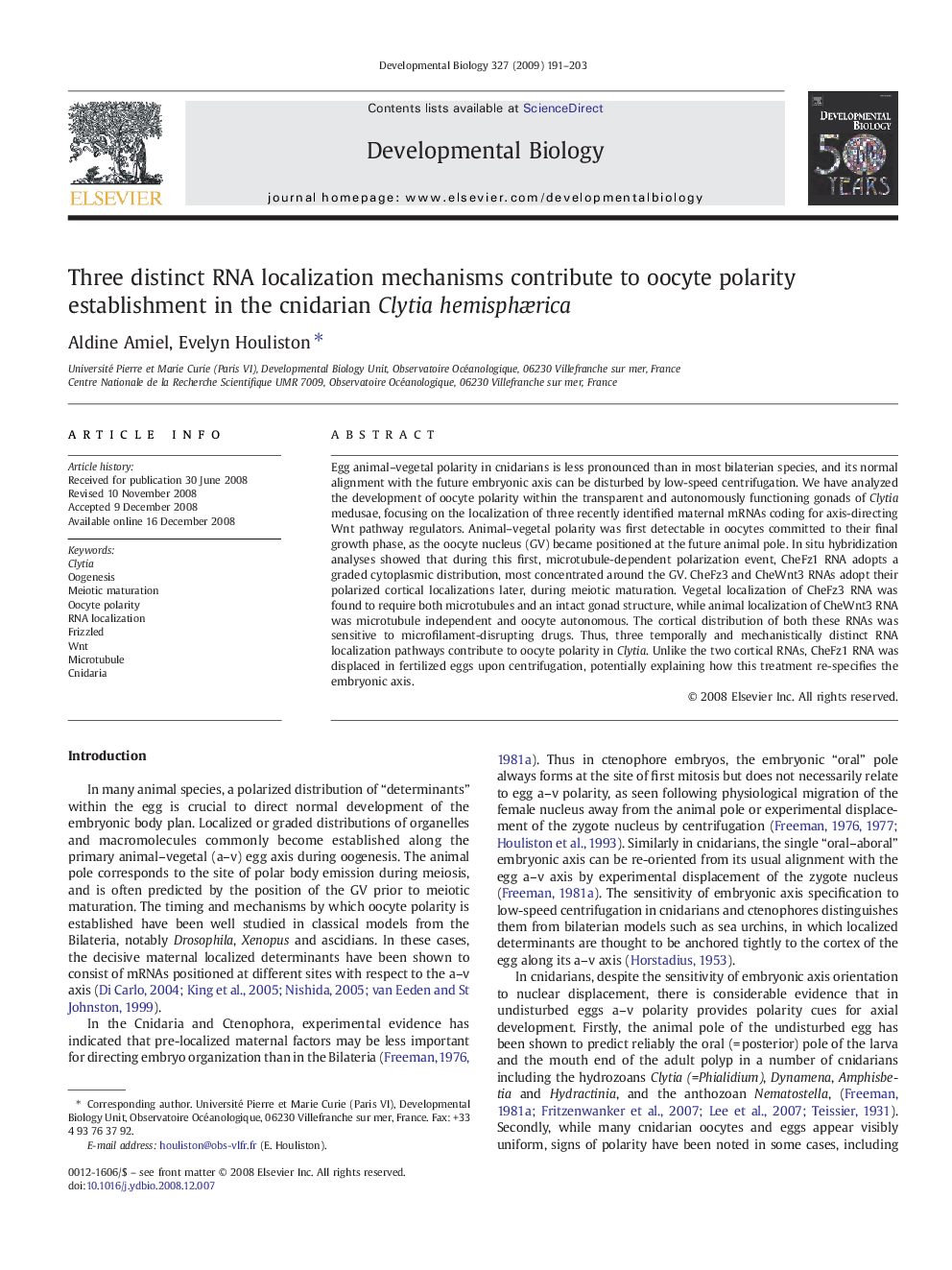| Article ID | Journal | Published Year | Pages | File Type |
|---|---|---|---|---|
| 10933497 | Developmental Biology | 2009 | 13 Pages |
Abstract
Egg animal-vegetal polarity in cnidarians is less pronounced than in most bilaterian species, and its normal alignment with the future embryonic axis can be disturbed by low-speed centrifugation. We have analyzed the development of oocyte polarity within the transparent and autonomously functioning gonads of Clytia medusae, focusing on the localization of three recently identified maternal mRNAs coding for axis-directing Wnt pathway regulators. Animal-vegetal polarity was first detectable in oocytes committed to their final growth phase, as the oocyte nucleus (GV) became positioned at the future animal pole. In situ hybridization analyses showed that during this first, microtubule-dependent polarization event, CheFz1 RNA adopts a graded cytoplasmic distribution, most concentrated around the GV. CheFz3 and CheWnt3 RNAs adopt their polarized cortical localizations later, during meiotic maturation. Vegetal localization of CheFz3 RNA was found to require both microtubules and an intact gonad structure, while animal localization of CheWnt3 RNA was microtubule independent and oocyte autonomous. The cortical distribution of both these RNAs was sensitive to microfilament-disrupting drugs. Thus, three temporally and mechanistically distinct RNA localization pathways contribute to oocyte polarity in Clytia. Unlike the two cortical RNAs, CheFz1 RNA was displaced in fertilized eggs upon centrifugation, potentially explaining how this treatment re-specifies the embryonic axis.
Keywords
Related Topics
Life Sciences
Biochemistry, Genetics and Molecular Biology
Cell Biology
Authors
Aldine Amiel, Evelyn Houliston,
